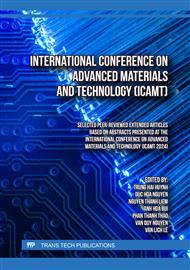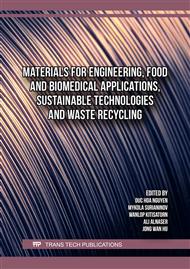p.3
p.11
p.17
p.27
p.33
p.43
p.49
p.61
Reduction of Iron Ore Pellets Containing Blast Furnace Dust
Abstract:
In the process of iron production in a blast furnace, a large amount of dust is generated as a by-product. The main components of this dust include iron and carbon, so a circular process should be implemented to protect the environment and reduce production costs. In this investigation, blast furnace dust (BFD) was used to produce pellets with iron ore as raw charging materials into the blast furnace. The mixture consists of BFD, iron ore, and 2 % in mass of bentonite as a binder in the pelletization process, with the ratio of BFD in the mixtures with fine iron ore being 0:100, 10:90, 20:80, and 30;70, respectively. Green pellets were dried at 105 °C for 24 hours obtaining dried pellets. Dried pellets are fired at 1200 °C in the atmosphere for 60 minutes to achieve the required mechanical properties obtaining fired pellets. The fired pellets were reduced at 1000 °C and 1100 °C for 45 minutes by coke breeze. XRD and SEM were then used to analyze the properties of the pellets. The results showed that the pellets exhibited improved metallurgical properties, making them suitable for charging material into the blast furnace.
Info:
Periodical:
Pages:
11-16
Citation:
Online since:
December 2024
Authors:
Keywords:
Price:
Сopyright:
© 2024 Trans Tech Publications Ltd. All Rights Reserved
Share:
Citation:



